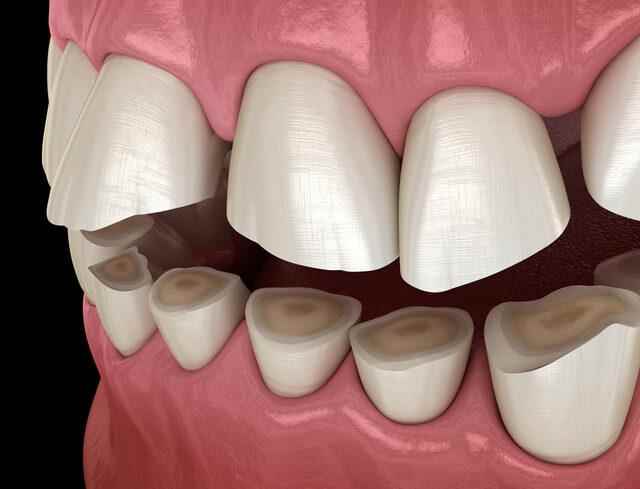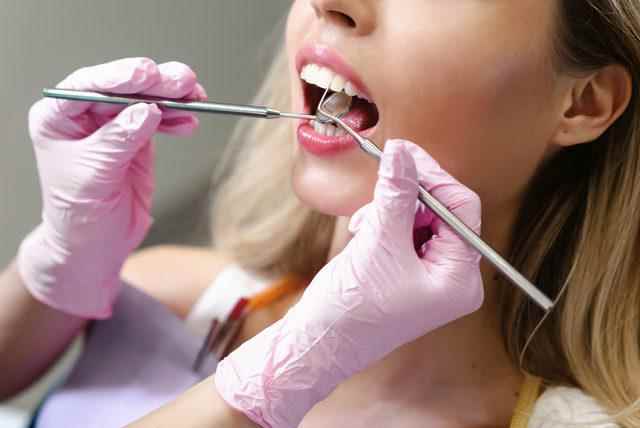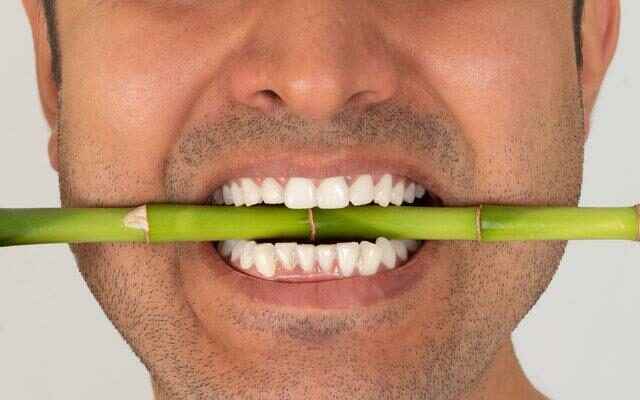Our teeth are worn and eroded over time as a result of the destructive effect of the hard foods we eat, the change of hot and cold, the chemical effect of acidic foods, and bad habits such as teeth clenching. As a result of these effects, our teeth begin to shorten and appear less when we smile. As a result of the wear of the natural shiny and polished enamel tissue, the teeth appear darker and become stained more quickly with the coloring foods we consume.
The enamel tissue, which thins and gets tired over time, is rapidly eroded from the gingival edge, which is the thinnest part of the tooth, causing the sensitivity to be felt especially when eating cold and sugary foods. Dentist Zafer Kazak gave information about the subject.
EFFECTS OF TOOTH BRUSHING HABITS
The effects of our brushing habits on tooth wear are as follows.
Tooth Brushing Methods: It is important to brush each tooth surface evenly in a circular motion.
Tooth Brushing Force: In order not to create sensitive areas, especially at the gingival margin, teeth should not be brushed by applying excessive force. Studies have shown that an increase in brushing strength does not have a positive effect on cleaning teeth.
Time Spent on Brushing: During brushing, all teeth should be brushed equally. The canine teeth, which are located in the corner of the dental arch, are the teeth that are brushed the longest and therefore wear the most.

Tooth Brushing Frequency: Studies have shown that the frequency of tooth brushing and the duration of contact between the tooth and the brush affect the degree of wear. It is thought that brushing teeth more than 2 times a day may be effective in the wear of the teeth. It can be said that the cause of deep abrasion lesions in elderly individuals with good oral hygiene is related to brushing frequency.
The area where tooth brushing is started and the positions of the teeth: The reason why the lesions tend to be seen more on the left side of the mouth is that right-handed people are dominant in the society. Right-handed people naturally start brushing from the left side of the mouth. Studies have shown that the position of the teeth in the dental arch is associated with wear, if the teeth are located in front of the arch, they are more exposed to trauma and wear.
THE IMPORTANCE OF THE TOOTH BRUSH
Shape and Bristle Hardness of Toothbrush: Toothbrushes can show numerous variations depending on the type of material the bristles are made of, their hardness, size and placement on the brush head. The bristles of toothbrushes are classified as soft, medium hard and hard. In newly developed toothbrushes, the bristles are combined in different ways in terms of size and placement. The interaction between the bristles and toothpaste is also very important. A hard brush is more abrasive when used with a standard paste than a soft one. Using the toothbrushes recommended by your dentist according to your oral condition is important in preventing tooth wear in the long run.

CORROSIVE EFFECT OF CHOICE OF TOOTHPASTE
The abrasives in toothpastes are important in removing the bacterial plaque from the teeth quickly and effectively, as well as in removing the discoloration of the teeth. In addition, the use of toothpaste significantly reduces brushing time due to its cleaning effect. However, it should not be forgotten that the use of large amounts of paste may cause loss of substance in the tooth due to these abrasives. However, toothpaste can cause further wear before it can be softened with water or mouthwashes.
For tooth wear detected in a routine dental examination, your dentist may plan preventive measures to prevent continued wear on the teeth and protect the teeth, and restorative treatments in cases where it is advanced enough to cause pain along with poor aesthetics and sensitivity.
PROTECTIVE MEASURES AGAINST TEETH WEAR
Changing eating habits: It is important to reduce the consumption of acidic foods and beverages, hard foods with shells (such as hard white chickpeas).
Changing teeth brushing habits: The teeth should be brushed without applying too much force with the toothbrush, the time recommended by your dentist, the frequency, the technique.
Application of protective splint: The protective plaque applied to patients with the habit of clenching reduces the force exerted by the teeth on each other and prevents wear.
THERAPEUTIC METHODS
Treatments applied to sensitive teeth: Enamel tissue that has been thinned or completely removed as a result of wear is the main cause of sensitivity. Sensitizing varnishes and LASER applications applied to thinned enamel areas by the dentist are treatments with very successful results. In areas where the enamel tissue has completely disappeared, aesthetic filling applications eliminate both sensitivity and bad aesthetics.
Restorative and prosthetic treatments: More complicated treatments should be preferred in mouths where wear is severe. In such cases, the length of the teeth is shortened, the relationship between the lower and upper jaws has changed, and the color of the teeth has darkened. After the causes of wear are determined, your dentist will select the appropriate materials (in order to prevent the wear from continuing after treatment), and with a correct planning consisting of treatment options such as crown and bridge restorations, onlay restorations, lamina applications, the teeth will return to their old healthy form, color, size and position.
